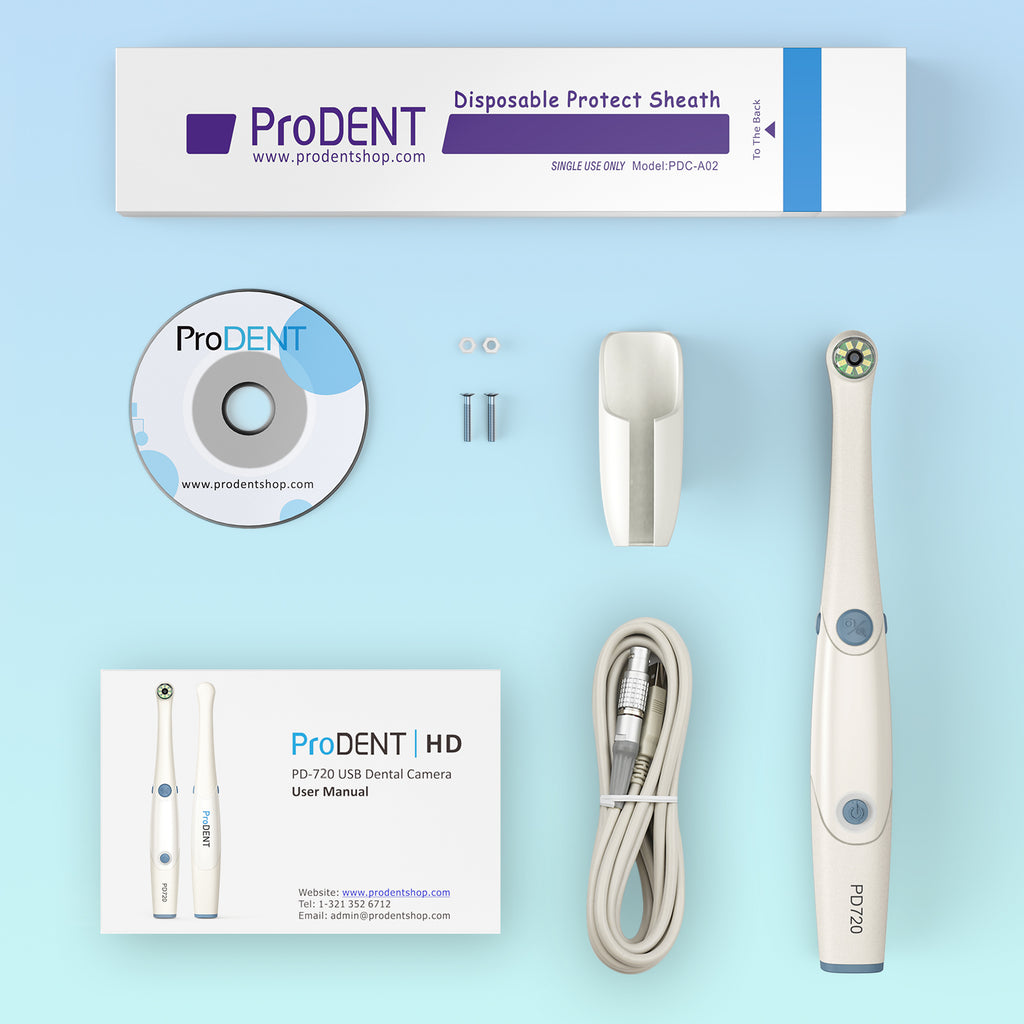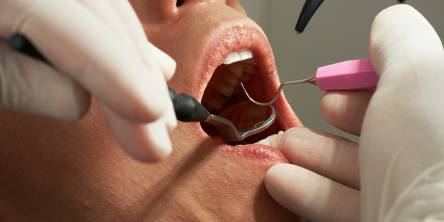Why Invest in High-Quality Intraoral Cameras for Dental Practices?

In the competitive world of dentistry, staying ahead means embracing technology that enhances patient care and practice efficiency. High-quality intraoral cameras have emerged as essential tools for dental practices, offering clear visuals that improve diagnostics and treatment planning. This article explores the benefits of investing in these advanced cameras and how they can improve the patient experience while boosting practice growth.
Importance of Intraoral Cameras
Intraoral cameras play a critical role in modern dental practices. These devices improve the precision of diagnostics while improving overall patient interactions.
Enhanced Patient Communication
Intraoral cameras provide clear visuals of a patient's mouth, offering an effective communication tool. Dentists can show patients real-time images of their dental conditions, making it easier to explain treatment options. Patients engage more actively when they can see the issues firsthand, fostering trust and understanding. As a result, improved communication often leads to more informed consent and higher treatment acceptance rates.
Improved Diagnostic Capabilities
High-quality intraoral cameras, like those offered by ProDENT, improve diagnostic accuracy significantly. They capture detailed images that enhance the detection of dental issues, such as cavities, gum diseases, and oral cancers. Precise imaging allows for early identification and intervention, which can lead to better outcomes for patients. Additionally, these cameras can document changes in dental health over time, enabling tracking of conditions and treatment effectiveness. Enhanced diagnostics ultimately contribute to more effective treatment planning and improved patient care.
Read more: 7 Questions to Ask Your Dentist Before Getting Veneers

Image by prodentshop.com
Key Features of High-Quality Intraoral Cameras
High-quality intraoral cameras offer essential features that improve dental practice efficiency and patient diagnosis. Attention to specific attributes ensures these cameras meet the needs of modern dentistry.
Image Quality and Resolution
High-quality intraoral cameras deliver exceptional image quality and resolution. Cameras with a minimum resolution of 1-2 megapixels provide clear, detailed images, allowing for accurate diagnostics. Enhanced imaging technologies, such as HD capability, improve visibility of fine details, facilitating early detection of issues like cavities and periodontal disease. Color accuracy is also crucial, as it allows for precise assessments of tissue health and other dental conditions.
Ease of Use and Portability
Ease of use is a critical feature of high-quality intraoral cameras. User-friendly interfaces enable dental professionals to operate the cameras efficiently without extensive training. Lightweight designs and ergonomic grips improve maneuverability within the oral cavity, increasing comfort for both the dentist and patient. Portability is another important aspect; compact cameras can easily fit into standard dental toolkits, ensuring accessibility during procedures and consultations.
Cost-Benefit Analysis
Investing in high-quality intraoral cameras presents a clear cost-benefit advantage for dental practices. These tools not only improve diagnostic capabilities but also contribute to overall practice efficiency.
Initial Investment vs. Long-Term Savings
Initial investments in high-quality intraoral cameras typically range from $1,500 to $5,000. While this upfront cost may seem significant, long-term savings often offset this amount. Enhanced diagnostic accuracy leads to fewer misdiagnoses and unnecessary treatments, translating to reduced overhead costs. Increased patient acceptance of treatments due to improved communication may also result in higher revenue. Practices that utilize intraoral cameras often report increased efficiency in consultations, allowing more patients to be seen within the same time frame, maximizing practice profitability over time.
Impact on Patient Retention and Satisfaction
High-quality intraoral cameras significantly impact patient retention and satisfaction. Patients appreciate transparency in their dental care, and real-time visuals foster trust. Clear images of dental conditions facilitate better understanding, which promotes informed decision-making regarding treatment options. Positive experiences often lead to higher patient retention rates, as satisfied patients are more likely to return for routine check-ups and recommend the practice to others. Practices utilizing these cameras often see increased patient loyalty, contributing to sustained revenue growth and a reputable practice image within the community.
You May Also Like: Effective Checklist to Find a Good Dentist
Practical Applications in Dental Practices
High-quality intraoral cameras play a significant role in enhancing dental practice efficiency and patient care. Their applications offer tangible benefits in both patient education and clinical documentation.
Educational Tools for Patients
Intraoral cameras serve as powerful educational tools, allowing dentists to visually communicate dental conditions to patients. Clear images illustrate the state of oral health, making it easier for patients to understand diagnoses and the necessity for treatment. Patients often find it challenging to grasp complex dental issues through verbal explanations alone. When dentists present real-time images, patients gain a clearer insight into their conditions, significantly improving their engagement in treatment decisions. This clarity fosters a cooperative environment, leading to informed consent and increased acceptance of recommended treatments.
Efficient Record Keeping and Treatment Planning
Intraoral cameras facilitate efficient record keeping and treatment planning. These devices capture high-resolution images that provide a detailed visual history of a patient’s dental conditions. Accurate records improve the ability to track the progression of dental issues over time, informing future treatment strategies. With comprehensive documentation, dentists can easily reference past treatments, ensuring continuity of care. This streamlined approach not only supports better decision-making but also reduces the risk of miscommunication within the dental team, ultimately contributing to improved patient outcomes.
Conclusion
Investing in high-quality intraoral cameras is a strategic move for any dental practice aiming to improve patient care and operational efficiency. These advanced tools not only improve diagnostic accuracy but also foster better communication between dentists and patients. By providing clear visuals of dental conditions, they build trust and facilitate informed decision-making.
The long-term benefits, including increased treatment acceptance and patient retention, outweigh initial costs. As dental technology continues to evolve, embracing these innovations will position practices for sustained growth and success in a competitive landscape. High-quality intraoral cameras are more than just tools; they’re essential assets that can transform patient experiences and outcomes.
Similar Articles
The desire for a healthy smile drives approximately 4 million people toward teeth straightening procedures. When it comes to straightening teeth, lingual braces offer a discreet alternative to traditional braces and clear aligners.
As we grow older, our dental needs evolve significantly. The carefree days of childhood tooth fairy visits transform into the more complex world of adult dental care. After age 25, many adults begin to notice changes in their oral health.
Missing teeth can cause a wide range of oral health issues. Nonetheless, over 120 million Americans are missing at least one tooth, and the figure is anticipated to climb as time passes.
A dental emergency doesn’t make an appointment. It shows up unannounced and unapologetic, usually in the middle of the night or during a meal that was supposed to be fun
A dental emergency can strike fast and without warning—during dinner, in the middle of the night, or just before a big meeting.
A wide range of factors can have a direct effect on your oral health. A balanced diet is essential, as is good oral hygiene and regular dental examinations. Many individuals think that nutrition alone can't improve oral health.
The results of wearing Invisalign aligners look stunning, and they are way more convenient than traditional braces. However, no one speaks about what it feels like to wear the same pair of traces around 22 hours a day
Temporomandibular Joint Disorder, commonly known as TMJ, is a condition that causes pain and dysfunction in the jaw joint and surrounding muscles. This disorder can arise from various factors, including teeth grinding, arthritis, jaw injuries, poor posture, or stress.
A root canal is a common treatment that people pay the dentist a visit for. According to a study, root canal treatment claims were up by 42% in the last five years.









